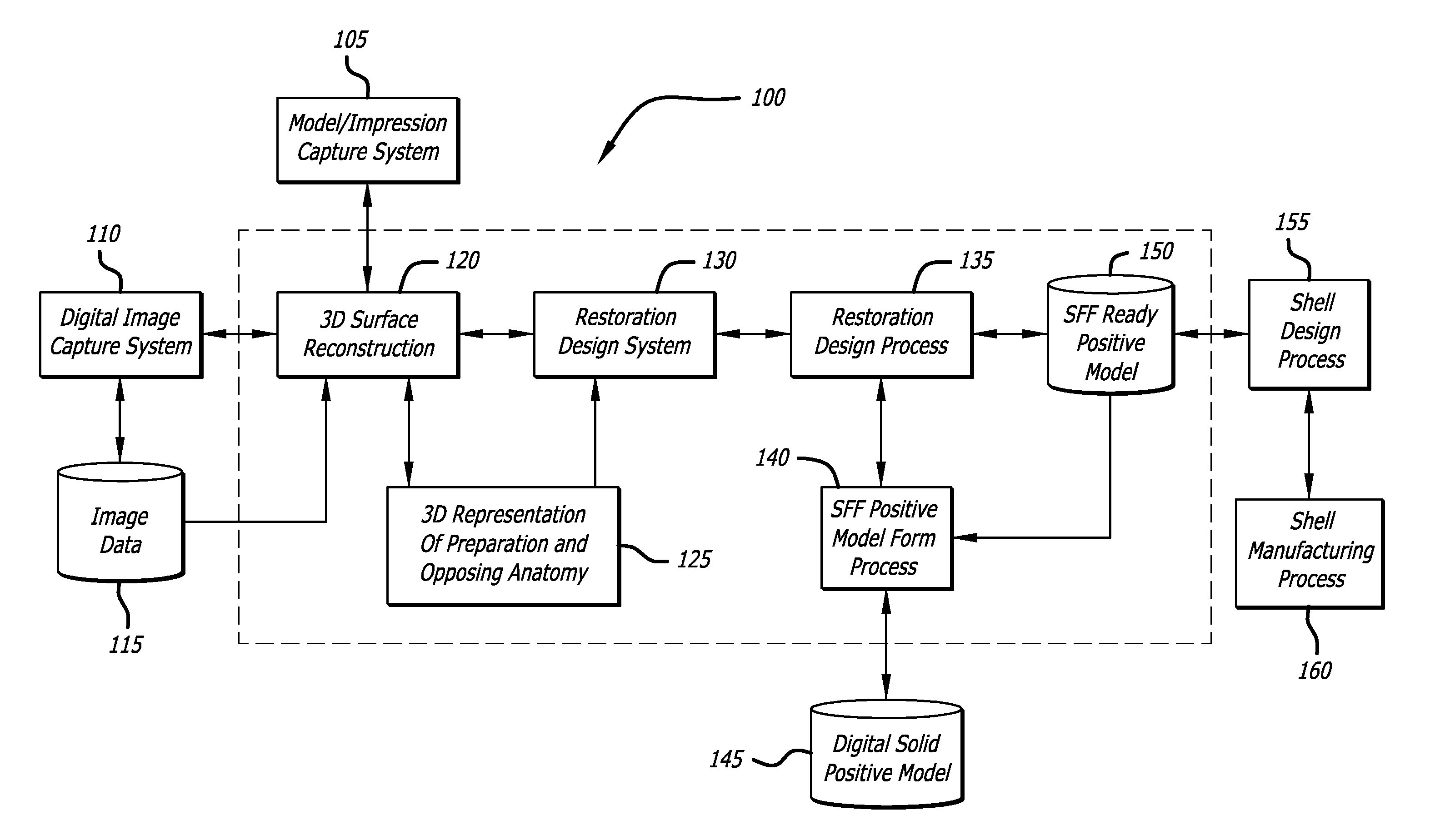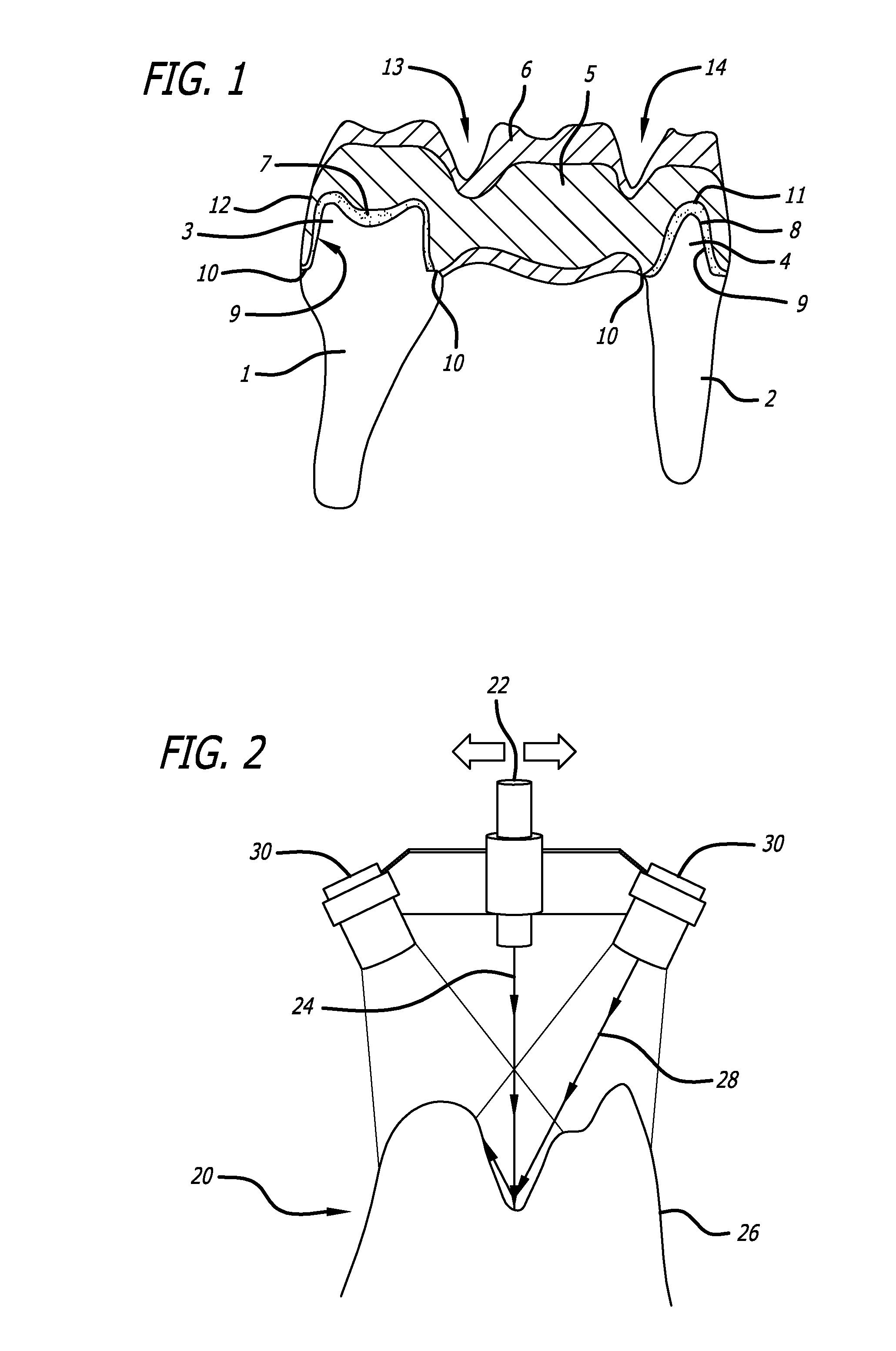Process for making a dental restoration model
- Summary
- Abstract
- Description
- Claims
- Application Information
AI Technical Summary
Benefits of technology
Problems solved by technology
Method used
Image
Examples
example
[0062]The following is an example of use of an embodiment of the present invention to scan an impression and generate a data set of inverted date for use in generating a model.
[0063]A silicone impression of a bicuspid restoration site and opposing teeth anatomical model was trimmed and coated with a layer of glare free substance. The trimmed coated impression was placed on a revolving support in a 3Shape Model D-250 digitizing scanner available from 3Shape Dental systems, Copenhagen, Denmark. After mounting on the support fixture, additional glare free substance was added to assure that no imperfections were evident in the coating coverage.
[0064]The impression was scanned by the digitizing scanner at a scanning speed of 100 points per second with each point spaced at 0.0025 of an inch from the adjacent point. A step over scanning preset distance of 0.005 inches was used during the scanning process. According to the literature provided by the manufacture, the laser beam of the digiti...
PUM
 Login to View More
Login to View More Abstract
Description
Claims
Application Information
 Login to View More
Login to View More - R&D Engineer
- R&D Manager
- IP Professional
- Industry Leading Data Capabilities
- Powerful AI technology
- Patent DNA Extraction
Browse by: Latest US Patents, China's latest patents, Technical Efficacy Thesaurus, Application Domain, Technology Topic, Popular Technical Reports.
© 2024 PatSnap. All rights reserved.Legal|Privacy policy|Modern Slavery Act Transparency Statement|Sitemap|About US| Contact US: help@patsnap.com










